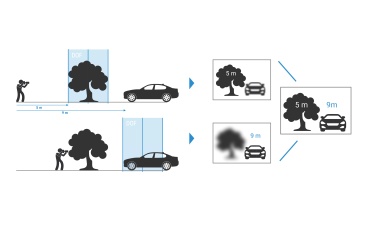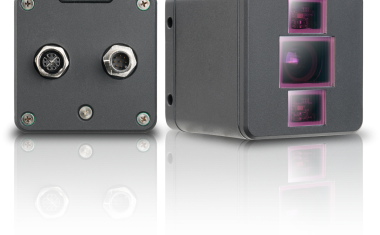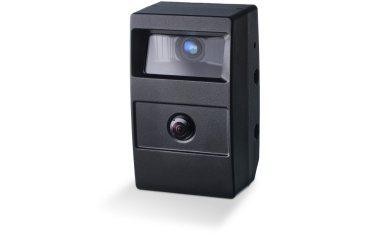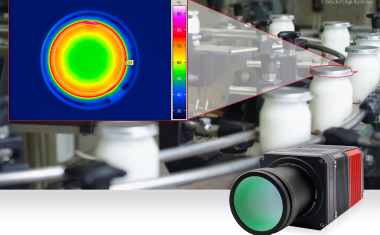Scanning at high speed
Mitsubishi Electric has responded to the needs of the surface inspection market, in particular within the print industry, with the launch of a high-speed version of its contact image sensor (CIS), distributed under the name Mitsubishi Electric Line Scan Bar. Offering high quality, distortion-free image acquisition right up to the edges of the material, the new CIS scans surfaces at speeds up to 1000m per minute and above, in a compact, easy to install format.
For all machine builders, system integrators and end users, the CIS offers an ideal alternative to line scan cameras for inspecting defects on flat surfaces. Compared with a line scan camera, the CIS is simple to install, held in place directly above the surface of interest at a fixed height, with all LED illumination and optics built in. Mitsubishi Electric estimates that, with just four screws and four cables, the CIS can be installed in just a few minutes, compared with the hours or even days that might be required to install and align a line scan camera system with its complex set-up and numerous ancillaries.
By being close to the material instead of mounted high above, the CIS also helps to significantly reduce the overall footprint, and therefore the costs and complexity of the machine. Ease of installation and removal means maintenance and support requirements are also significantly reduced. This benefits not only machine builders but also end users who now no longer need to have specialist engineers on standby and who can be assured of minimal downtime in the event of a problem.
Typical application areas for the CIS include the print and thin film production industries, where it can be used to detect surface defects on paper, plastics, fabrics, banknotes and even holograms. The CIS is available in a range of widths that match the most common print sizes, and for larger material widths multiple CIS sensors can be cascaded side-by-side with seamless image acquisition right across the full width of the material. The CIS can also be used for the surface inspection of wood, glass and other materials. In addition, the CIS can form the heart of an automated optical inspection system for circuit boards.
This significant development has already been implemented by Lake Image Systems Ltd. in its Discovery Maxscan product that has been designed to deliver high quality document integrity for its clients. One of the first to take advantage of this technology is Data One, a company that prints transactional documents and personalized direct mail on its Xerox Impika eVolution printer. The high resolution, distortion-free images are sent to the Discover Multiscan3 inspection platform in real-time, while the printer is running, for image processing.
Each image is processed to capture variable barcodes, text (OCR) and other elements on the document, Multiscan3 then verifies the codes are present, in the right location and readable. Codes are matched against a supplied control file or database to check for sequencing and integrity errors. Print quality inspection can also be performed by analyzing registration marks and detecting for voids, streaks and spots.
The Mitsubishi Electric Line Scan Bar has also been adopted by Hunkeler AG as an integral part of its WI8 Web Inspection System for quality and content control. The WI8 is used in a number of Hunkeler post finishing modules for applications in the transactional, direct mail, publishing and commercial print segments. The company offers scalable quality assurance systems for web inspection and tracking solutions through the Hunkeler control platform.
For the end user, this latest advance in high speed imaging offers assurance that the documents they print are complete, correct and acceptable in terms of print quality. It also mitigates the risks associated with the printer sending out sensitive financial information to the wrong recipient and maintains client satisfaction levels. For the OEM, this technology can be seamlessly integrated without costly additional rollers, redesigned web paths or complex optical assemblies that are typical with standard camera inspection technologies.
Markus Köhler, Mitsubishi Electric Business Development Manager, comments: “The new CIS offers high quality image acquisition in the smallest footprint ever. Taking up so little space, and with its ease of installation and integration, the CIS is a solution that all machine builders, system integrators and end users have been waiting for. By addressing the widely appreciated challenges associated with using line scan cameras we have a potentially popular, game changing solution. With guaranteed distortion-free image acquisition right up to the edges of the material, and no need to sacrifice resolution for larger material widths - as you would have to with a line scan sensor, the CIS improves both defect detection and machine throughput. And with this new high-speed version, we can match any line scan camera system for headline performance.”
This latest development from Mitsubishi Electric will be supported in the European markets by Stemmer Imaging, which is the preferred distributor for the contact image sensor.











